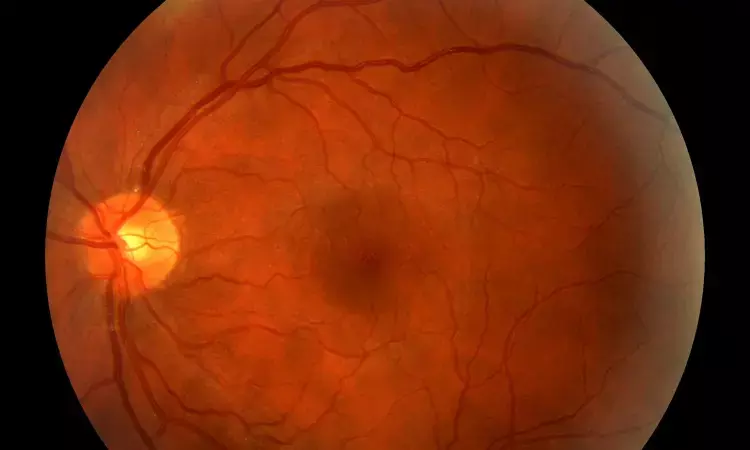- Home
- Medical news & Guidelines
- Anesthesiology
- Cardiology and CTVS
- Critical Care
- Dentistry
- Dermatology
- Diabetes and Endocrinology
- ENT
- Gastroenterology
- Medicine
- Nephrology
- Neurology
- Obstretics-Gynaecology
- Oncology
- Ophthalmology
- Orthopaedics
- Pediatrics-Neonatology
- Psychiatry
- Pulmonology
- Radiology
- Surgery
- Urology
- Laboratory Medicine
- Diet
- Nursing
- Paramedical
- Physiotherapy
- Health news
- Fact Check
- Bone Health Fact Check
- Brain Health Fact Check
- Cancer Related Fact Check
- Child Care Fact Check
- Dental and oral health fact check
- Diabetes and metabolic health fact check
- Diet and Nutrition Fact Check
- Eye and ENT Care Fact Check
- Fitness fact check
- Gut health fact check
- Heart health fact check
- Kidney health fact check
- Medical education fact check
- Men's health fact check
- Respiratory fact check
- Skin and hair care fact check
- Vaccine and Immunization fact check
- Women's health fact check
- AYUSH
- State News
- Andaman and Nicobar Islands
- Andhra Pradesh
- Arunachal Pradesh
- Assam
- Bihar
- Chandigarh
- Chattisgarh
- Dadra and Nagar Haveli
- Daman and Diu
- Delhi
- Goa
- Gujarat
- Haryana
- Himachal Pradesh
- Jammu & Kashmir
- Jharkhand
- Karnataka
- Kerala
- Ladakh
- Lakshadweep
- Madhya Pradesh
- Maharashtra
- Manipur
- Meghalaya
- Mizoram
- Nagaland
- Odisha
- Puducherry
- Punjab
- Rajasthan
- Sikkim
- Tamil Nadu
- Telangana
- Tripura
- Uttar Pradesh
- Uttrakhand
- West Bengal
- Medical Education
- Industry
Moderate Iron Intake Linked to Lower Risk of Diabetic Retinopathy in Type 2 Diabetes: Study Finds

China: A recent study, published in BMC Endocrine Disorders uncovered a non-linear association between dietary iron intake and the risk of diabetic retinopathy (DR) in individuals with type 2 diabetes.
Among 1,172 participants, those consuming between 13.2 and 18.1 mg of iron per day showed a notably reduced risk of both DR (OR 0.59) and vision-threatening DR (VTDR) (OR 0.42). The protective effect of moderate iron intake was particularly pronounced in women (OR 0.44), individuals with obesity (OR 0.45), those with elevated HbA1c levels (OR 0.56), and participants with low hemoglobin levels (OR 0.17).
Diabetic retinopathy, a common microvascular complication of diabetes, is a leading cause of vision impairment and blindness in working-age adults worldwide. While strict glycemic control remains a primary preventive strategy, growing evidence suggests that nutritional factors may also play a role in modulating disease risk.
Against the above background, Xiaoyun Chen, Sun Yat- Sen University, Guangzhou, China, and colleagues explore the link between dietary iron intake and the risk of diabetic retinopathy among individuals with type 2 diabetes.
For this purpose, the researchers analyzed data from adults over 40 years of age with type 2 diabetes who participated in the National Health and Nutrition Examination Survey (NHANES) 2005–2008. Dietary iron intake was assessed using standardized questionnaires, while the presence of diabetic retinopathy and vision-threatening diabetic retinopathy was determined through retinal imaging. To evaluate the association, logistic regression models were employed, and restricted cubic splines were used to identify potential non-linear relationships.
The key findings of the study were as follows:
- The study analyzed data from 1,172 adults with type 2 diabetes (T2D).
- A significant nonlinear association between dietary iron intake and diabetic retinopathy (DR) was observed in females, but not males.
- Individuals in the third quartile of iron intake (13.2–18.1 mg/day) had significantly lower odds of developing DR (OR 0.59) and vision-threatening diabetic retinopathy (VTDR) (OR 0.42) compared to those in the lowest quartile.
- Medium-high iron intake was linked to a reduced risk of DR in females (OR 0.44), non-Hispanic Black individuals (OR 0.38), those with obesity (OR 0.45), elevated HbA1c levels (OR 0.56), longer diabetes duration (OR 0.40), and low blood hemoglobin levels (OR 0.17).
“The study demonstrated a nonlinear inverse association between dietary iron intake and the risk of diabetic retinopathy (DR) and vision-threatening diabetic retinopathy (VTDR) in individuals with type 2 diabetes,” the authors noted. They added, “A medium-high iron intake appeared to offer protective benefits, particularly among females, non-Hispanic Black individuals, those with obesity, poor glycaemic control, and longer duration of diabetes. However, excessively low and high levels of iron intake may not be advantageous in preventing DR.”
They concluded, “Further longitudinal studies and controlled trials are needed to establish the optimal dietary iron intake and assess its long-term impact on DR and VTDR outcomes.”
Reference:
Chen, X., Fu, Y., Si, H. et al. Dietary iron intake is nonlinearly associated with the risk of diabetic retinopathy in adults with type 2 diabetes. BMC Endocr Disord 25, 102 (2025). https://doi.org/10.1186/s12902-025-01926-z
Dr Kamal Kant Kohli-MBBS, DTCD- a chest specialist with more than 30 years of practice and a flair for writing clinical articles, Dr Kamal Kant Kohli joined Medical Dialogues as a Chief Editor of Medical News. Besides writing articles, as an editor, he proofreads and verifies all the medical content published on Medical Dialogues including those coming from journals, studies,medical conferences,guidelines etc. Email: drkohli@medicaldialogues.in. Contact no. 011-43720751


